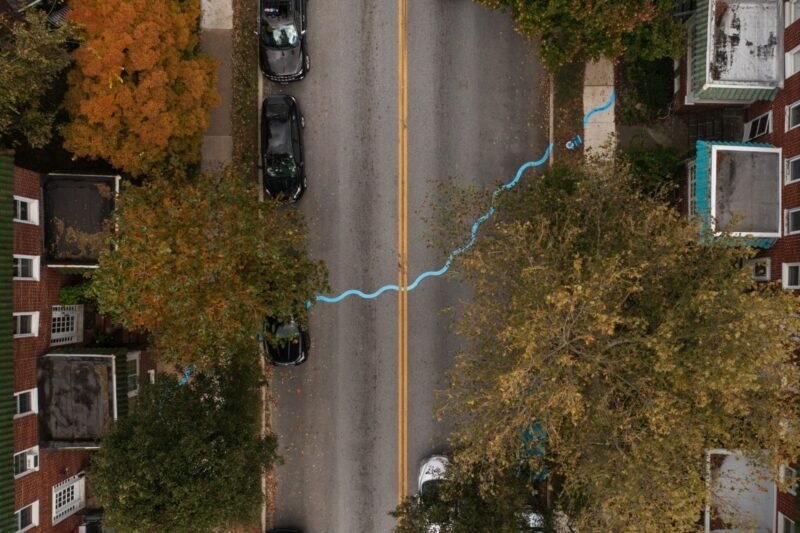Please Stay Behind The Blue Wi-Fi Fence
The city is filled with an invisible landscape of networks, but now we can see more and more of them. Wow! This is a great new invention that we waited for since so much digital information flows through the air. It is fascinating that a whole economy of information uses an infrastructure that we can’t see. But it is even more fascinating that is made visible now. The idea is a result of the Touch research project that investigates Near Field Communication (NFC), a technology that enables connections between mobile phones and physical objects. Though in general developes applications and services that enable people to interact with everyday objects and situations through their mobile devices.

This project explores the invisible terrain of Wi-Fi networks in urban spaces by light painting signal strength in long-exposure photographs. A four meters tall rod with 80 points of light reveals cross-sections through Wi-Fi networks using a photographic technique called light painting. Check out this video to learn more. The invention is not coming out of the blue, but is a result of series of earlier experiments conducted by Touch. Urban Tick explains the way Touch came to this mind stunning result:
“Touch was earlier experimenting with RFID working on the nearness project, together with berg. In a next step they used a similar approach, on much small scale, to visualize the transmitter field of the RFID reader. In this sense the visualization of the Wi-Fi is some sort of large scale, real world implementation. They also experimented with the visualization of Wi-Fi earlier. This new very much hands on approach works amazingly well in terms of the images it produces. I guess this is the nice thing with finding the treasure, you get to give it an image, you can brand it.”

It’s fascinating to see the borders of a Wi-Fi network and also to see how the signal strength differs very strongly when, for instance, a car passes by. This invention would be a great future tool for private and public spaces which are strongly depending on wireless Internet. Visitors can see were the signal strength is best and choose their place to work. On the other hand, people can also choose to not bother themselves with too much bits and bytes around their heads, and take place in a Wi-Fi hole. Further in line with the discussion on the ubiquitous presence of all sorts of signals in the air and the possible heath problems they could cause, this tool can have a great indicative role, enabling people to choose whether they want to take a heath risk or not. The modern radiation is indicated in the air to point us to service as well as to risks.
Being more positive and perhaps more up to now, I can imagine this form of information landscaping becoming a furniture tool. Wouldn’t it for example be cool if a bar’s lighting concept is based on the presence of Wi-Fi? But this will not only work for bars. What about the possibilities for urban space? Think of a square having fences of light showing us the boarder of a Wi-Fi area. One could create new places with a sense of functional urgency based on the presence of Wi-Fi. Now that the presence of a wireless Internet connection seems to become a factor of growing importance for contemporary space use, implementing this technique would be the right way to give this new function a physical component.



